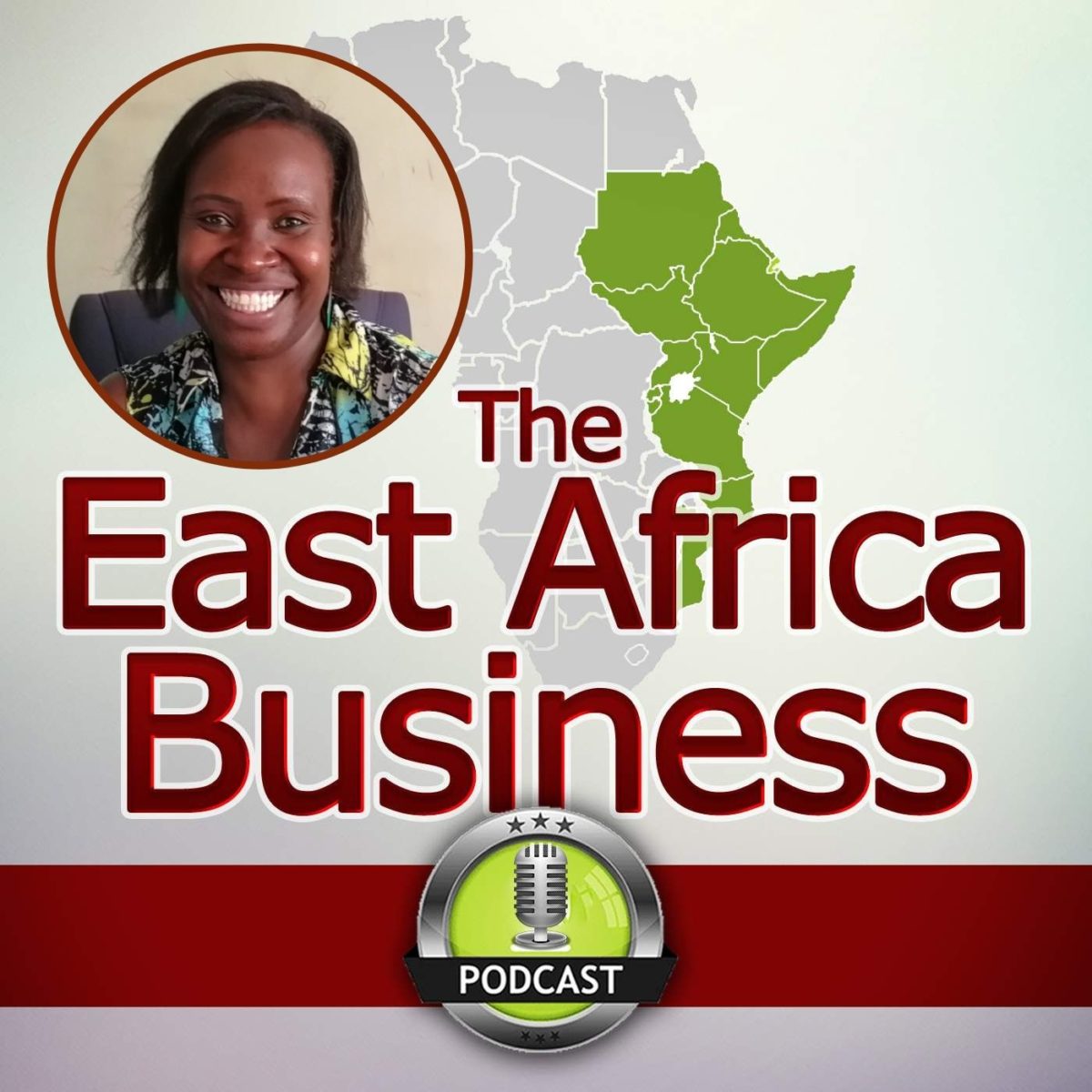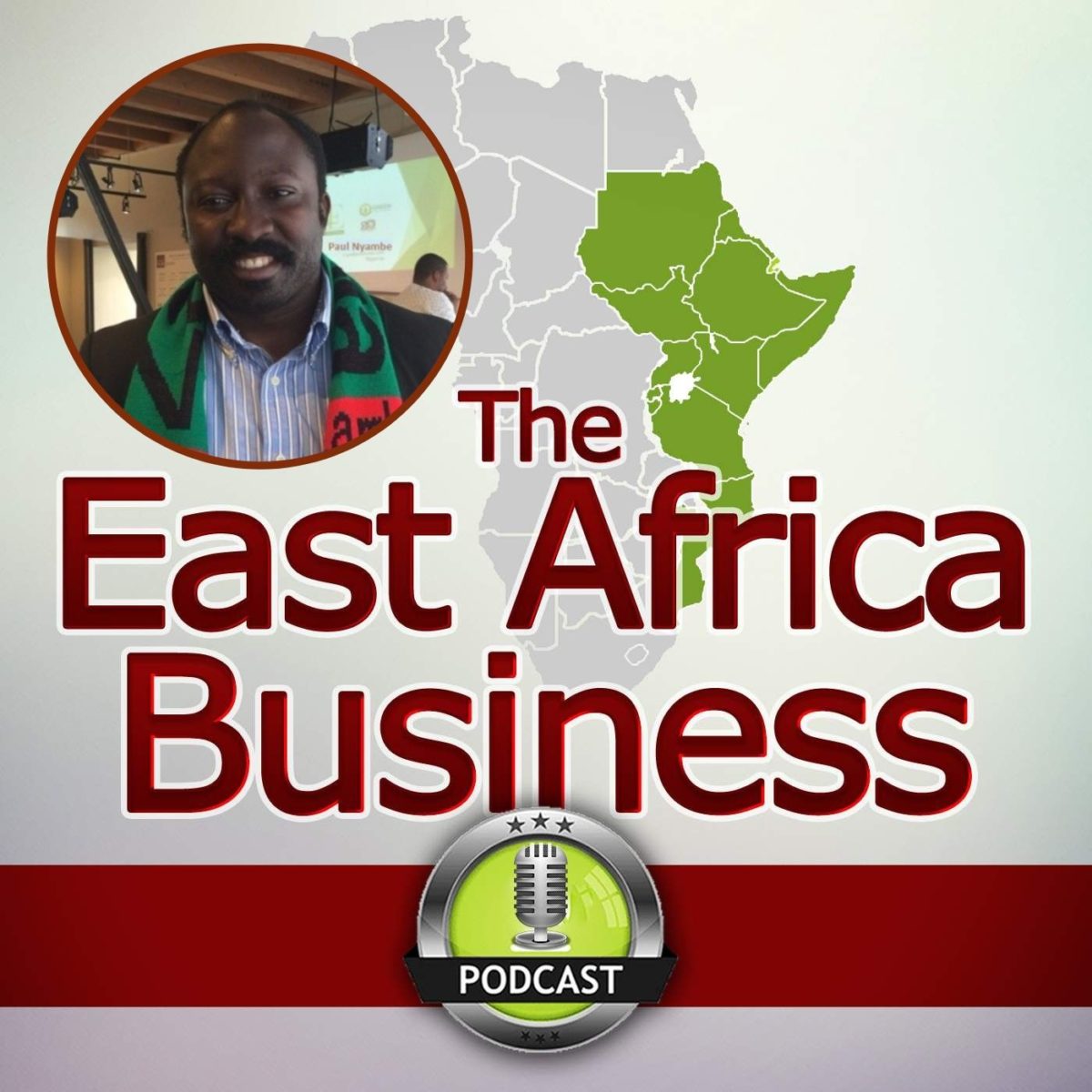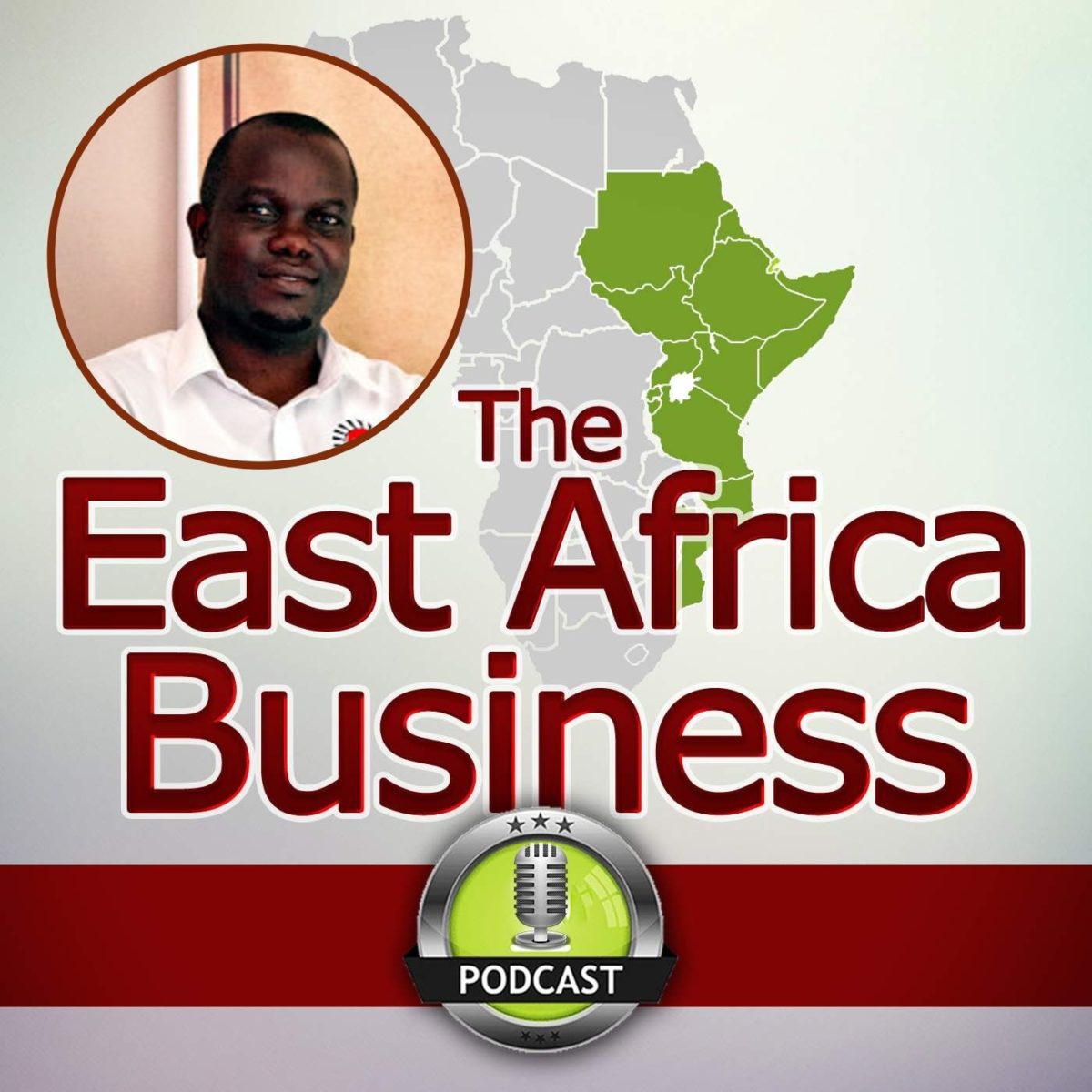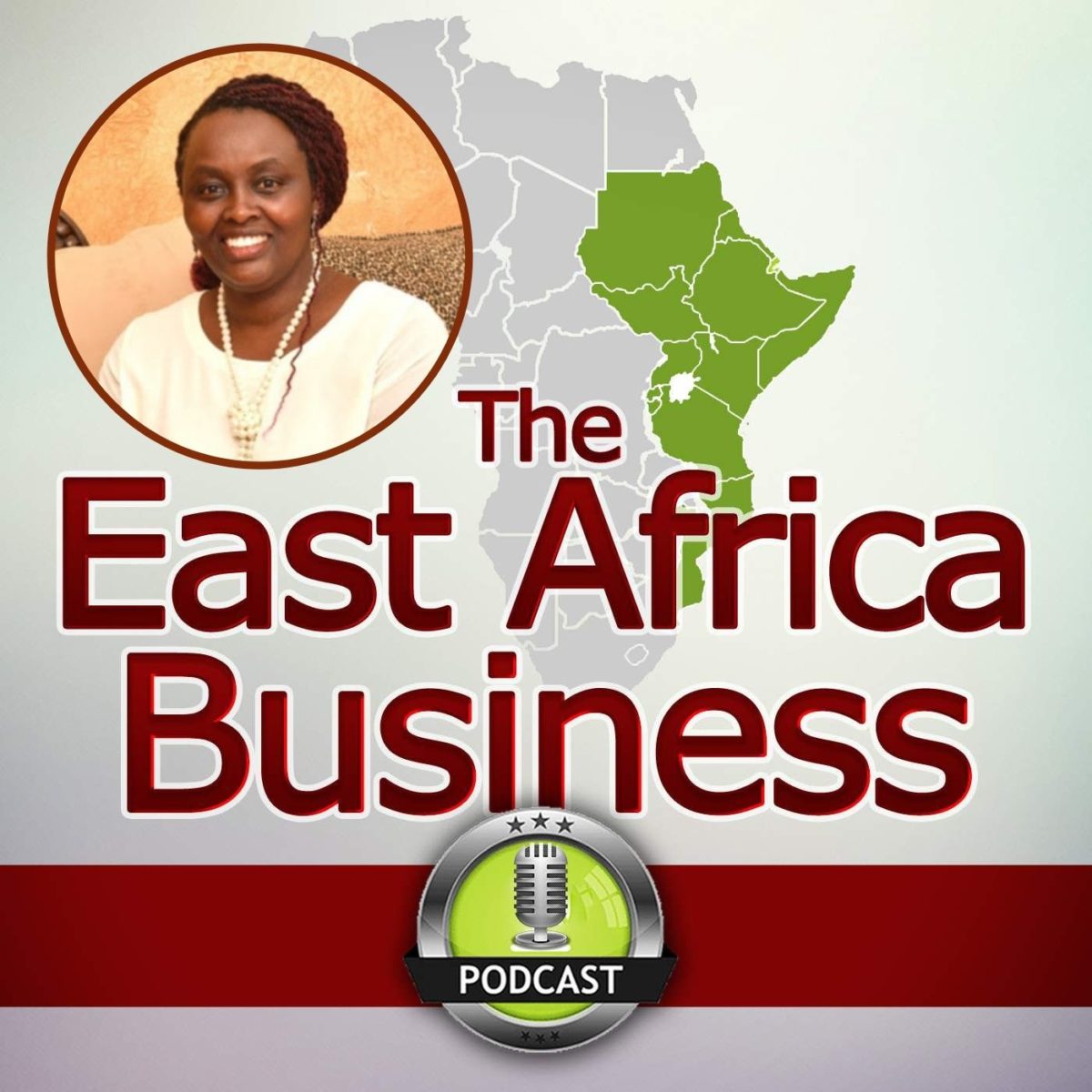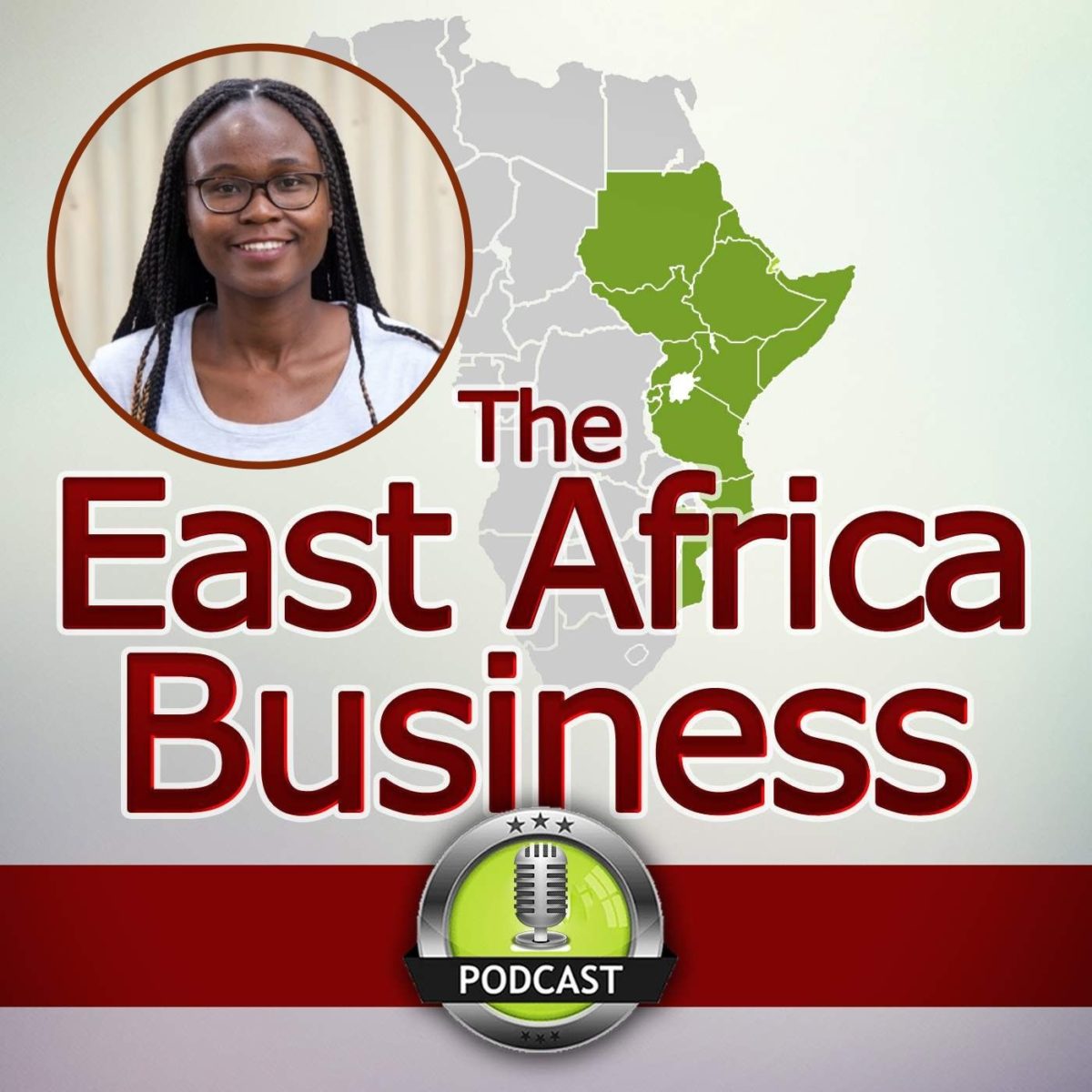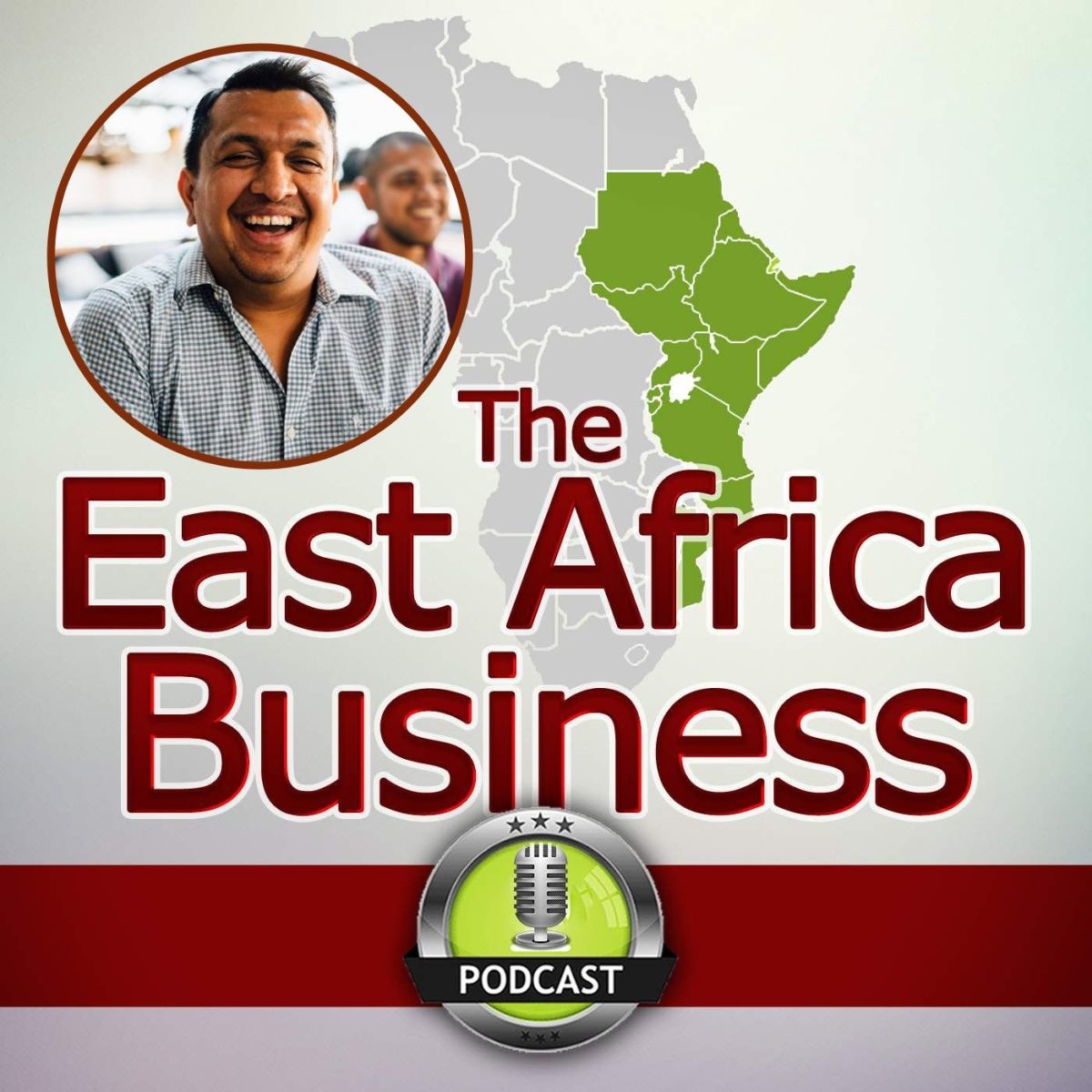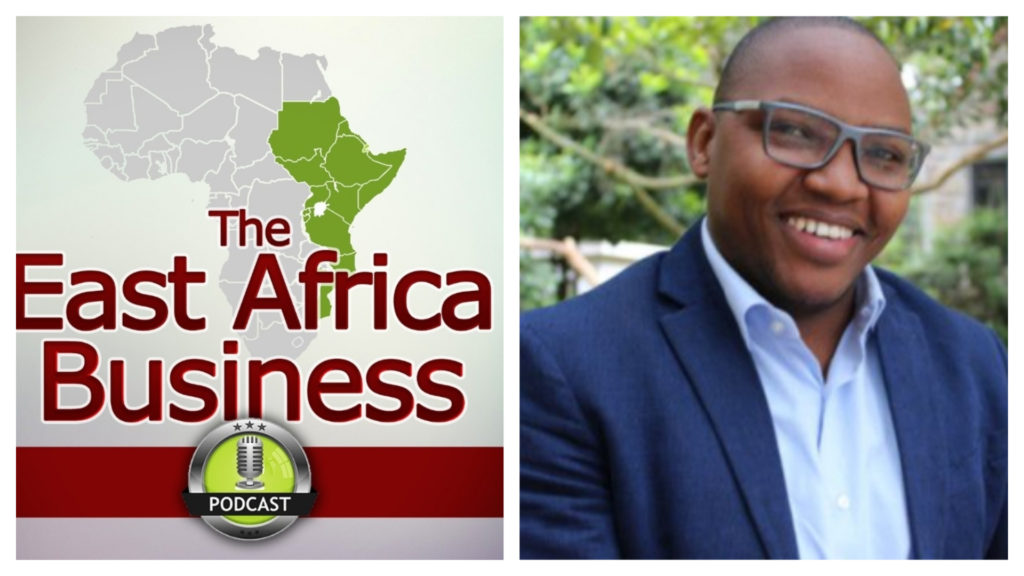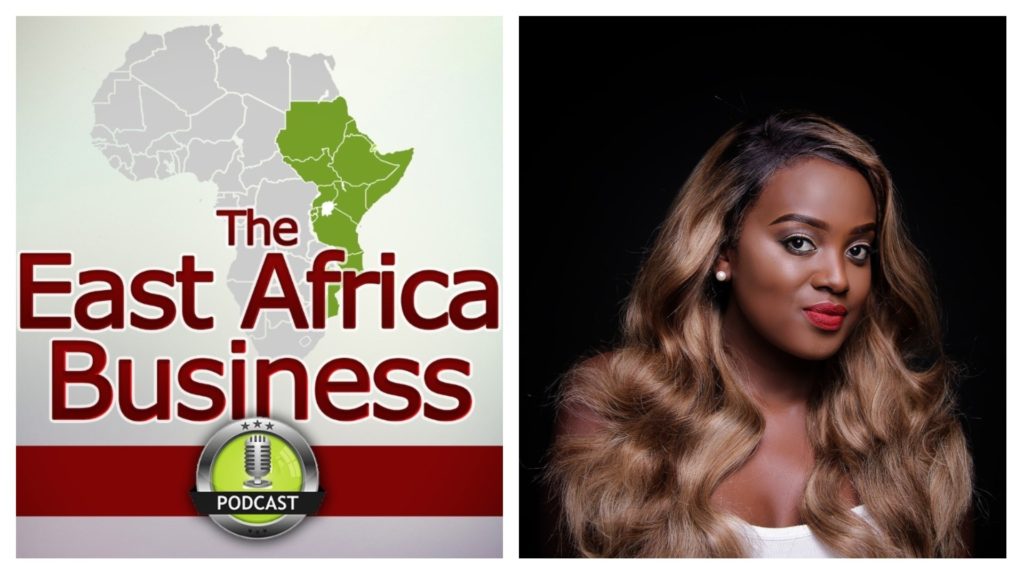Overview
In this episode, I speak with Sabina Karumba about how she and her husband started Chia Africa.
Most businesses have an interesting formation story, though this one is one of the best I’ve heard in a while.
Sabina and her husband were watching TV one evening in 2012 when a doctor came on the show and explained the health benefits of chia seeds.
Compelled to learn more they undertake research and a few months later are planting their own chia plants in Western Uganda.
This is the first commercial plantation of chia seeds on the continent, and after going around with samples of what they grew they both quit their day jobs and go full time on the business.
A few years later and they are the premier producer in the region, trying to keep up with demand despite other people entering the market too.
Sabina and I talk about lots of interesting things such as how chia seeds should only be grown within 5 degrees of the equator, the genesis of becoming Africa’s first chia seed producers (despite never having farmed), and keeping up with the demand for the superfood.
One thing which Sabina downplays, but I thought was particularly impressive is her attitude to sales.
Two of the biggest breaks for the company came with being listed by a major supermarket, and then one of the region’s largest distributors.
In both cases, she just turned up unannounced at their offices, asked to see the owner and after sitting down with them, sold them on making big orders for Chia Africa in just one meeting.
The reason I think is that Sabina is clearly incredibly passionate about the power of chia seeds, and believes everyone should have them in their diet.
Her pitch is pretty simple: it has amazing health benefits that can change people’s lives, people just don’t know about it yet, make sure you have some in stock.
Sign up below to hear whenever there are new stories and episodes released on the podcast
Pictures from the farm
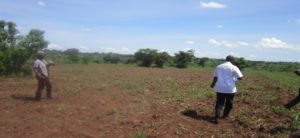
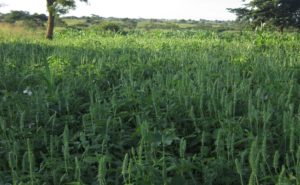
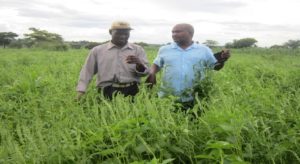
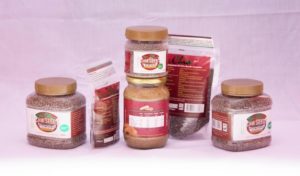
Social Media Links
Website: http://www.chiaafrica.co.ke/
Facebook: https://www.facebook.com/chiaafrica/
Transcript
Sam: 00:00:00 Intro.
Sam: 00:03:37 Cool. So we’re here today with Sabina from Chia Africa, Sabina welcome to the show. So just to get started, could you tell us a bit about you and a bit about Chia Africa.
Sabina: 00:03:48 Thank you so much Sam, as you’ve heard, my name is Sabina Wanjiru Karumba, I am a Kenyan. We do run Chia Africa with my husband who’s also my business partner. His name is David Kisembo and he’s based in Uganda. Chia Africa is registered in Kenya with offices in Kenya, but our farmlands are in Uganda. That’s where we do our farming since the 2012, that’s when we started, or that’s when we first heard about chia seeds. Amazingly, we heard about chia seeds from one program on TV called the 700 Club. There’s a gentleman who had been brought in, who is a medical doctor who was talking about chia seeds, and we were like, what wonder seed is this? We were so excited and were like, let’s find out more about this seed, what this seed is all about because it was so amazing. Whatever they talked about the chia seeds, it was so amazing, it was something like everybody must know about. So our journey began and the research began. Initially, we were calling it chai. Chai in Swahili or in East Africa is tea, that is tea. And we were like, we’re looking for this chai, chai, but we couldn’t find the chai.
Sam: 00:05:14 Looking for tea?
Sabina: 00:05:14 Yes. Yes. So we had to replay The 700 Club once again, and then we released it is chia.
Sam: 00:05:20 Okay. So a TV program?
Sabina: 00:05:23 Yes, The 700 Club.
Sam: 00:05:23 Why is it called the 700 club?
Sabina: 00:05:26 It has its membership probably, I believe its membership. They started with a membership of about 700 people who were supporting, it’s a Christian program.
Sam: 00:05:35 Okay.
Sabina: 00:05:35 With somebody called Pat Robertson, yes.
Sam: 00:05:38 Okay. It’s a Tv program and Pat, he invites some guests?
Sabina: 00:05:44 Yes. They do talk about politics, they do talk about health, they do talk about business so amazingly on this particular day, besides the normal question they do and all that, they also discussed about the health, human health.
Sam: 00:05:57 What was the medical doctor, what was he saying about chia seeds?
Sabina: 00:06:01 He was talking about how amazing this chia seed is and what it does? What it is able to give the body from very small quantities of what you consume? The minerals in it, the vitamins, the proteins, the omega 3 in it. We were like from that one tablespoon or 20 grams that you consume in a day, and you’re able to get all this, it was amazing. Yeah.
Sam: 00:06:22 Wow. Okay. So this is in 2012?
Sabina: 00:06:27 That was in 2010.
Sam: 00:06:28 And how long was it before you realized it was called chia and not chai?
Sabina: 00:06:31 Amazingly, at around that time, we were, me and my husband were discussing about career change and all that. He’s a mechanical engineer by profession. I am an accountant by profession. But we wanted to venture into something that we would be able to do and work on together? So actually at that time, we were thinking about the agribusiness and amazingly, this important information comes to us so immediately we didn’t take long. We started finding out what this chia seed is, so we went like three, four days. We were not able to find out what this chia seed is because we’re looking for chai and we’re like, the chai we know is the normal chai I take every morning. It has never given me, yes, of course, it has benefited me, but it hasn’t even given me these amazing benefits as what I heard from the 700 club, so eventually were able to find out that it is not chai, it is chia and the research went on and barely a month after that we’re able to even get contacts of some Americans who had come to East Africa. They had done a bit of groundwork, some research to try and find out if they can introduce this seed to the East African region.
Sam: 00:07:42 Okay.
Sabina: 00:07:42 Yes.
Sam: 00:07:44 And what did they say?
Sabina: 00:07:44 They had just engaged the first group of farmers, of which sometimes because of probably the education background and all that, people up country in rural areas, they find it difficult to embrace new crops that they don’t understand about.
Sam: 00:08:02 Yes.
Sabina: 00:08:02 But amazingly because we had already heard about it and when we looked around and were able to talk to them, actually we talked to them, we were in Nairobi, they were somewhere in a place called Masinde, that is West of Uganda. They were there at that particular moment, this the same place that my husband, area. That’s exactly where he was born.
Sam: 00:08:19 Really?
Sabina: 00:08:19 Yes. So it was very easy for them to understand and to, for us to integrate and they were also excited because they were like, no, we’ve gotten people who are willing to, understand this whole project that we are getting into. Yeah.
Sam: 00:08:34 Cool. Okay. Wow. So I mean there’s lots to sort of talk about but I think, sort of, let’s keep on the supply side of the business.
Sabina: 00:08:42 Yes.
Sam: 00:08:43 What does it, what does the chia plant, is it chia plant, chia seed from chia plant?
Sabina: 00:08:48 Yes, the chia seed comes from the chia plant, and, okay, chia seeds, it’s generally South American, basically Mexico, but its scientific name is salvia Hispanica.
Sam: 00:09:03 Salvia Hispanica?
Sabina: 00:09:03 Yes, that’s the scientific name.
Sam: 00:09:05 Okay.
Sabina: 00:09:05 But the common name, which is known everywhere, and it’s embraced, if you go to North America, go to South America, go to Europe. It’s been called chia, come to Africa, we’re calling it chia and not chai anymore.
Sam: 00:09:15 Yeah.
Sabina: 00:09:15 Yeah, exactly.
Sam: 00:09:17 Okay. What does chia, what does a salvia Hispanica plant look like?
Sabina: 00:09:21 It’s just a plant that grows that with, let’s say not very big leaves, medium-sized leaves, which grows to about two to three meters in height.
Sam: 00:09:35 That’s quite tall.
Sabina: 00:09:35 Yes, yes, yes. And you achieve that if you having good weather, the soils are good, but if your weather is not good, the rains are not coming well, it will flower, even when it is like even one foot high, which is not good. Yes, it will flower, but if you put that in the labs, you are going to find that the nutritional content is very low. But in good environment, actually it can go even as high as a three meters.
Sam: 00:09:59 Okay.
Sabina: 00:09:59 Yeah.
Sam: 00:10:00 Cool. And how long does it take to grow to three meters?
Sabina: 00:10:02 It takes about three to four months on the higher side, four months. If you have some delay in the rains because we are using rain feder, it’s rain farming that we are doing, if you have a bit of delays, within four months, at most four months, you will have harvested. But if there’s no delay with the rains, even three and a half months. You’ll do your havesting.
Sam: 00:10:23 And can you do all year round or does it have to be, so can you do, if it’s four months, can you do three cycles a year?
Sabina: 00:10:34 Okay. First, let me take you a little bit back on the good conditions for the growth and germination of the chia seed. Basically the seed, the reason why it has gotten this high popularity, It is because of its nutritional content. It also has to be in an optimal area, where it can develop or manufacture these particular nutrients that you’re looking after and basically it needs about five degrees within the Equator, North or South of equator. Exactly.
Sam: 00:11:07 Really?
Sabina: 00:11:07 Exactly.
Sam: 00:11:07 Not very many places are conducive?
Sabina: 00:11:09 And that is why you see, it’s around the Mexico area. The South America. That is where it does very well and that is why the group of first people who came to invest here, they came from North America and they came in the region of East Africa, reason why, East Africa generally lies between five degrees, North and South of Equator. That’s where you get the optimal.
Sam: 00:11:34 Yeah.
Sabina: 00:11:34 Exactly. So if you come here, you will find that even within the Equator, there’s Kenya, Uganda, Tanzania, Rwanda, we are lying within the Equator, but in some regions, the rainfalls, they vary, for any seed basically to germinate, it needs some moderate reasonable amount of rainfall. Some regions they do get rainfall like twice, two good seasons in a year, although in as much as we’re falling within the Equator, so where we are farming it in Uganda, we are able to do it comfortably. We can do it twice. Although there’s another short season in the month of June, July in Masinde, but it’s quite unreliable. So basically we do opt to do it between February and then we harvest by end of April, May, latest by June. And then the next season we start it in October and we do our harvesting by December, January.
Sam: 00:12:25 Got it.
Sabina: 00:12:26 Yes. So two seasons in a year comfortably. Although when the rains are sufficient, we can do three seasons. Yeah.
Sam: 00:12:34 If you could irrigate, could you definitely do three seasons?
Sabina: 00:12:38 You can do it all around. If you can do irrigation, you can do it all around because the sunshine within the Equator is more or less consistent throughout the whole year.
Sam: 00:12:49 Yeah.
Sabina: 00:12:50 Yes. Yeah. Now, unfortunately, the part that comes with farming chia, the productivity per acre. If you look at the product, the yields are not as high because when the rains are good under optimal weather, you get about 400 Kgs, 400 kilos per acre.
Sam: 00:13:08 Yeah.
Sabina: 00:13:09 People who do maize farming, that is corn. They’re able to do like 40 bags of a hundred that is like a 40 bags. You’re doing here four bags of chia, with the maize, you’re doing 40, you’re doing 10 times.
Sam: 00:13:26 I see.
Sabina: 00:13:26 Yeah. So, because the seed is equally very, very small. You have a look at it, it’s a very, very tiny seed. So the productivity is low. So what does it tell you? You need a very high acreage for you to be able to produce a lot. Likewise, when you do irrigation it means you’ll be irrigating a very vast area and investment on that will equally be very high.
Sam: 00:13:52 If the potential for it to yield, if it had a greater potential to have high yields, it would make more economical sense to do irrigation.
Sabina: 00:14:00 To do irrigation.
Sam: 00:14:01 So at the moment, it’s not quite a good investment?
Sabina: 00:14:04 Unless, let’s say, because for me I can say we as Chia Africa, we’ve had so many enquiries, especially from Europe. Europe is a very big consumer of the East African products. Like for Kenya we are doing a lot of horticulture and if you look at the flowers which are being done now in Europe, like almost I think four out of ten roses in Europe are from Kenya, actually basically in Kenya. So Europe is a good market for the East African agri-products. We’ve been having enquiries here and there and very, very positive, because we do send small quantities as they’re developing also their markets because they also need consistency, but I do believe in a very short time sooner than later because we are having very advanced discussions with quite a number of big time suppliers with some huge supply chains in Europe, we should be able to get to a point where we can say. We are not willing to invest so much into irrigation to harbour an all year round production.
Sam: 00:15:04 That’s very interesting so at the moment is Chia Africa exporting?
Sabina: 00:15:08 We do export. We do export small quantities. We’ve sent to Germany, we’ve sent to our clients who were still based in Nairobi, but has clients in Europe, but It’s a US company based here. They do oil, crude oil-pressing.
Sam: 00:15:25 Cool.
Sabina: 00:15:26 Yes.
Sam: 00:15:29 Are you selling it to them packaged in your packaging or are you selling it just as a commodity?
Sabina: 00:15:35 It depends on the preference of the customer. There are those who are ok with our packaging. There are those, because of also the regulations within their area, they need to have different kinds of packages and also language barriers. Like for clients who are coming from Arabic regions, we do translate our stickers and everything, even our own, the same, same branding, but we do translate it into their, into the commonly used language wherever they’re coming in, they’re coming from. Yes. And for that who are not willing to, to do, they want to develop their own brand because sometimes it’s also wise to develop your own brand. Yes. For those who are willing to develop their own brand, we do get them in bulk.
Sam: 00:16:16 Yeah.
Sabina: 00:16:16 Yes.
Sam: 00:16:17 I see. Is chia seeds, is there any real difference in chia seeds that are grown here versus in Mexico versus growing elsewhere or, like can you say that yours is a high one, chia seeds is a high quality than another? Or is it just really about the packaging or like that? Or the method of delivery?
Sabina: 00:16:44 Let me say this, the reason why I took you back to the optimal regions for growing the chia seed and why chia seed is becoming so popular. It is because of the nutritional content. They’ve said within the equator and it has been researched and they are these information out there, researched information about the most optimal area. Reason why actually when you do plant it within the five degrees North and South of the equator. You do get the nutritional levels being very, very high. It doesn’t mean pride elsewhere and that’s why I was saying the first group who introduced the chia farming here generally, basically in East Africa. They had come from the US. They had done a bit of research here and there and they, they had understood that if we do it. Within the Equateur you’re going to have the optimal, if you do it in other areas, they’re still going to get the chia seeds, but the nutritional levels, especially things like the Omega three it hasn’t been confirmed, the levels were very, very low. When the Americans came here, they did a comparison of the chia, the first habits we had with the chia seed in Masinde and generally in Uganda area, they compared to what they got from Mexico, I’m proud to say it came out six times better.
Sam: 00:18:00 Six times…
Sabina: 00:18:02 It was amazing. Yes, exactly. And then I knew you would ask me again, why do you want to do it in Uganda? We’re based here in Kenya. There’s a reason for that. If you look at the history Uganda, let’s go to the history of Uganda, there was a lot of civil unrest after they got their independence. So as a result, people never got to settle and do the farming as such. So their land was not very much over utilized. In Kenya, we’ve had basically and we thanks God for that. We’ve really enjoyed civil stability, especially after independence. That is in the early sixties. We’ve had stability, political stability, whereby, people able to do their farming, they all that and all that. So as a result, spaces here, have been quite over utilized. And again, if you look at the percentage of arable land in Kenya compared to that in Uganda, Uganda is a much smaller country than Kenya, but you can say 34% of the land in Uganda is arable. That’s quite a good percentage as opposed to here in Kenya we have a very, way much smaller percentage which is arable, so there are soils not over utilized. Secondly, most of the area you can do your farming, so it becomes quite an optimal place for us to do the farming.
Sam: 00:19:21 Ok, and also your husband is from there.
Sabina: 00:19:25 He’s there so it makes it even more convenient. Yeah.
Sam: 00:19:29 So talk me through how it works, so you watched the 700 club in 2012.
Sabina: 00:19:33 Yes.
Sam: 00:19:34 You had the conversation with the Americans a month, two months later?
Sabina: 00:19:38 In fact, barely a month after that.
Sam: 00:19:41 And how long was it before you were planting your first chia plant?
Sabina: 00:19:44 In 2012 October.
Sam: 00:19:49 October of 2012?
Sabina: 00:19:50 October of 2012, we did our first trials. We had never farmed before.
Sam: 00:19:54 Oh.
Sabina: 00:19:57 We didn’t, actually even at that time, I was still employed somewhere, doing accounts for somebody. My husband was still doing he’s a technical things.
Sam: 00:20:06 Yeah.
Sabina: 00:20:07 There we go to the farm. We now think we’re equipped with all the knowledge that we need to do the farming. And we failed miserably the first time we did it. We harvested so little. But thank God, the little that we had enabled us to do the, at least the lab analysis and it gave us encouragement. Yeah. And besides we also knew now if we do it better and at the right time we’re going to get the yields that we expected, so the next season, there we were, we went full board and we also began to also try and sensitize it because the whites, the Americans, the Western world, they are aware, they were aware of what chia seeds were, they were beginning, a high population was aware of what chia seeds were. Here locally, you would talk of chia seeds and they would be like, what is that you’re talking about?
Sam: 00:20:50 Yes.
Sabina: 00:20:51 So just to impact on making people understand what chia seed is and all that. Because we were fully convinced this something that should be in everybody’s diet on a daily basis.
Sam: 00:21:00 Yeah.
Sabina: 00:21:00 Yeah.
Sam: 00:21:01 Okay. And how much work is needed, is necessary on the farm? Do you have to engage with some of the population?
Sabina: 00:21:10 It is a lot of work. The first time we did, we did, we started with 30 acres, you know we were like no, this is the right thing to do…
Sam: 00:21:17 How did you get 30 acres?
Sabina: 00:21:17 In Uganda as I’m telling you, they are still having huge chunks of land. It’s possible to even get a hundred acres of land consolidated so you can run a farm of up to a hundred acres. Because what happens in Uganda with most of it being fertile, you’ll find people, even with two acres, they’re able to produce their own food sufficient for the family. So there’s also quite a lot of land laying up there. Still not being utilized. Yes. It makes it easier to be able to acquire that land.
Sam: 00:21:42 And the fact that you’re husband is Ugandan, that means you can, did you own the land or do you leas the land?
Sabina: 00:21:47 They do have land, fortunately, in his family, the grandfather had invested in a very huge piece of land because we have like 400 acres of land.
Sam: 00:21:56 Wow.
Sabina: 00:21:56 Yes, yes. So with 400 acres of land, there’s part of that land that has never been ploughed completely. So 30 acres ia a drop in the ocean, considering what is within the exposure.
Sam: 00:22:09 So you do that and then who, how many people could you have to sort of cultivate that?
Sabina: 00:22:16 We did mechanical farming, ploughing. There are certain things you just, we’ve got a tractor. We also had to do a lot of bush clearing. That entails a lot of work. It’s a lot of work. Then we did a plan. We got a tractor, two, three days, it does the ploughing. Yes. And the disking, that we do it mechanically, but now when it comes to the planting, we had a planter, we had acquired one planter from China. Yes, a planter, a simple handheld planter.
Sam: 00:22:49 Its a machine?
Sabina: 00:22:50 Yes. Yes. A planter because we’re looking at it and we’re saying, you know to do 30 acres, when are we ever going to finish this. Yes. we said, okay, let’s get a planter. So we had gotten a planter, which unfortunately didn’t work.
Sam: 00:23:07 Your husband being an engineer, he couldn’t fix it?
Sabina: 00:23:09 You know you fix it, these other part falls off tomorrow. So we gave up on that and we had done I think like at most four, five acres with the planter.
Sam: 00:23:19 Yeah.
Sabina: 00:23:19 And it wasn’t as effective as we had been made to believe it would be. We’d drop a seed here, the next one will be dropped there. So he had to go back again and… Exactly, yes. Yeah. And then after that it would drop a whole half a kg in one place. But we said it’s a learning experience and we were ready for it. We had, it was an exciting journey for us, we’re looking at the future, more of the future. So at that point we got people, a whole group of people, a whole village, just gather the whole village.
Sam: 00:23:59 You call like a village meeting?
Sabina: 00:24:01 That’s how they work, yes. That’s how they work. Actually they work in groups.
Sam: 00:24:05 Yeah.
Sabina: 00:24:05 Yeah.
Sam: 00:24:05 And you said like 50 people?
Sabina: 00:24:07 Yes. We’ve got about a group of about 50 people and in like two or three days, we had done it.
Sam: 00:24:13 So did you have to pay them?
Sabina: 00:24:16 You negotiate in their groups. You know they come like a group of 50 people, but they’re not in one grouping. They have a leader, actually, they have someone who negotiates on their behalf because you see some of them, they’re not educated, they’re having so many challenges. So they prefer working in groups. They have like a chairman who comes and negotiates on their behalf. So for an acre they charge about Ugandan shillings, that’s about thirty thousand Ugandan shillings, which is about 3000, which is about $30, 30 US dollars.
Sam: 00:24:45 $30 per acre?
Sabina: 00:24:51 Per acre, yeah.
Sam: 00:24:52 And then once they’re planted the seeds…
Sabina: 00:24:54 Yes.
Sam: 00:24:56 Does there need to be continual watering?
Sabina: 00:24:58 No, good thing here now, we now, depend on their rain fed. We do rain fed.
Sam: 00:25:05 So once it’s planted?
Sabina: 00:25:05 Yes.
Sam: 00:25:05 Is there much more work to be done.
Sabina: 00:25:07 There’s a lot of work.
Sam: 00:25:08 Okay.
Sabina: 00:25:09 The other major and challenging thing that comes on board, actually it is the weeding part and the weeding actually you cannot even do it mechanically, because you’re going to mess up a lot of your crops. So that one also has to be done manually. Yeah.
Sam: 00:25:23 Okay.
Sabina: 00:25:23 Yeah. Again, bringing the whole village, in groups, for about another one week and they’re able to do it, manually.
Sam: 00:25:31 Yeah.
Sabina: 00:25:31 Yeah.
Sam: 00:25:32 Okay. And then, so that was sort of when you started, what does the operation look like now? Are you still at 30 acres?
Sabina: 00:25:39 Initially when we started, we did the 30 acres and from the experience we had we realized we can do even much more. And again, at that point we had done a lot of sensitization. We did a lot of, especially here in Nairobi and in Kenya, let’s say in Kenya because people are more exposed, there is more exposure here, the Kenyan market embraced the chia seed quite well, and quite fast. We did not even have first to go to the export market because we were still having challenges of volumes, we could not do the volumes. So for the Kenyan market, once it accepted we are able now to feel like we can project, we can do this number of acres. So the first time we did the 30 acres, we did at the wrong time because we had never farmed before we, we did plant when it was slightly late. Remember, we’re depending on rain-fed water, we did it a bit late, so our yields, were a bit, In fact, they were just very low, let’s be very honest, they were very low, so next season we got very ready for it. We did partner with somebody else who was also willing to come on board because we wanted also, remember we were having the challenges of building a market and also production. We got a partner, based in Uganda full time, to manage the operations of the farm and here we did the marketing and sensitization. Yes. And it worked quite well.
Sam: 00:27:02 How did you find that partner?
Sabina: 00:27:05 He was among the first few people who were also in touch with the first, with the Americans who came with the first seed. Yes. So when people started getting, feeling like, this is something I don’t want to do, these things, you know, because chia seed, unfortunately for up country, I don’t know whether you’ve been to any of these up country areas of East Africa or Kenya for that purpose. Basically, they depend on their farms. Whatever they produce on the farm, that’s what they sell. If they’re not able to tell it, they can feed their kids on it. Chia seed, you cannot cook this and give it to your kids.
Sam: 00:27:37 Yeah.
Sabina: 00:27:37 So they felt, Okay, this is too risky business, we are not going to do it, let them do it. Once they succeed, we’ll come on board. So we, the few of us who are courageous to continue with it. We did. That lady was among them so we went again did farming. This time, we put in a hundred acres, did the ploughing at the right time, just on season, as the season was starting, we did it and it went very well until harvest time. Yes. Chia seed is not like any other crop, you see like when we plant, when we do farm, let’s say like maize because that’s basically the main thing which is being farmed around here in East Africa, Uganda, Tanzania, Kenya and it happens that it is raining during the last one week when we were anticipating to harvest. What you do, You don’t remove your crop on the farm. You just leave it until the sun comes out and then leave it there for about a week. It’ll dry up and you’ll be able to harvest it and it will be okay. Dried. It’s okay. Chia seed, once it comes into contact with water, It forms a gel.
Sam: 00:28:36 Yes.
Sabina: 00:28:36 It can not separate. Now, unfortunately, We just watched helplessly as it rained. The rains, It became a havoc in 2013. There were so much rains in East Africa, so much, actually it even brought down a few buildings here.
Sam: 00:28:50 Yeah.
Sabina: 00:28:51 Unfortunately it was harvest time. There’s nothing we could do. We cannot remove it. It’s not yet fully matured. It needed about a week and within that week it decides to rain and rain heavily, we just lost chia worth like 30,000 40,000 tons, metric tones.
Sam: 00:29:07 Just from that rain?
Sabina: 00:29:10 Yes, and that became another learning lesson for us. Now what we’ve done since then, we’ve still expanded our operations, but we’ve tried to see how we can reduce our risk. I’d rather lose 5 acres instead of losing a hundred acres. You’d also rather lose 5 acres instead of you, you lose a hundred I lose a hundred, another person also loses a hundred so what have we done? We’ve gotten farmers to come and invest. We’ve provided the land because the land is available, we still have about a hundred to a hundred and fifty acres available for chia farming. We bring farmers on board, we give them the seed, we facilitate them whenever they do not have finances because somebody made to come buy the seed, put it on the ground. But when it comes to the weeding point, this person doesn’t have the finances. We don’t just let the crop get, go to waste. We facilitate them to do the weeding then eventually, at the end of the harvest, we all come and sit down, I facilitated you with this and this and this, and we are going to buy this chia, in as much as we’ve given you the land, we facilitated you. We’re still going to buy it from you at this cost. Why? We’re trying to spread their risk. Yeah. And it’s beneficial for everyone because even the people now, the farmers who are not willing to come into cheer for me, they’ve seen us lose a hundred acres and they’re like these people are still going back. What is it about it?
Sam: 00:30:35 Yeah.
Sabina: 00:30:35 And again, now with the consumption of chia and the benefits they get out of it. They’re like, okay, I think it is still worth doing the chia seed. If you give somebody two acres, they’re able to manage two acres because with two acres they can do it. Even within the family members, the husband with their kids, they can manage two or three acres. So it means they’re the cost of input is reduced and then when they harvest, and able to get money or when they do not have any money for their school fees and we are facilitating them with the school fees, for us to be able to recover it when we harvest, we’re okay.
Sam: 00:31:05 Very good, so that’s sort of the main supply side of the business, you’ve got these sort of different farmers who are coming in and using the land.
Sabina: 00:31:18 Yes.
Sam: 00:31:25 Talk to me a bit about the demand side. So you’re saying that even if Kenya picked up quite fast, chia seeds are not something that’s really on many people’s radar. Even a few years ago. How have you seen the demand for chia seeds? What’s the story of the market of chia seeds in East Africa?
Sabina: 00:31:35 Okay when we started sensitizing, I would talk of chia seeds, even people would not listen to me, they would wonder now what is this person just wants to sell me the things? There are so many things that we keep hearing about health foods and all that and at that time actually the first harvest that we did, the majority of that went into sampling. The first 30 acres we did and we harvested so little. We decided fine, we’re going to take the full loss of this, but whatever we’ve harvested, we are going to use this as our Sampling, we give samples, actually, we give out a lot of samples. But thank God, chia seed is a very effective seed because in a short period as three days, you’re able to feel a difference in your body. So we were like so certain it is not a loss. We’re investing for the long term, not for them for the short term, but we knew in the long term, it was going to pay off because everybody who would use chia seeds, after three days would come back and tell us, my joint pains. I can tell you there’s a very big difference, I’m feeling much better. After a month, someone with arthritis will come and tell, you know me, I’m just a different person.
Sam: 00:32:41 It cures arthritis?
Sabina: 00:32:41 It does take care of arthritis very effectively, actually for somebody with arthritis, severe arthritis, after one week they tell you there’s a remarkable difference in the way they’re feeling.
Sam: 00:32:52 Wow.
Sabina: 00:32:52 Yeah. And actually even medical doctors, they’re now even telling people go and find chia seeds. At that time, these people, they don’t even know whether it is a plant, it is an animal, but they all go looking for chia because it is something which has been proven and now, good thing there is a lot of researched information on the effectiveness of chia seeds.
Sam: 00:33:11 So who, who are the main people who are buying chia seeds?
Sabina: 00:33:15 Initially when we started basically the people with arthritis.
Sam: 00:33:21 So it’s mainly medicinal. Like people…
Sabina: 00:33:24 It has nutrients… Okay, let us address what is disease. Disease is, it comes as a result of the body lacking vital nutrients. So the moment the body gets the vital nutrients that it is required and in correct quantities, the body will feel eased, it will be okay.
Sam: 00:33:40 Yeah.
Sabina: 00:33:41 Yeah, exactly. And because chia seed does that, it provides the nutrients that are needed in the body. It makes the body feel like, now I was unwell, now I am well.
Sam: 00:33:50 Okay. And if you, do you like segment your customers or do you say, you know, we’ve got these, this type of customer, we’ve got this type of customer, that probably I think that the people who have got ailments, you’ve got the people who just want to be a bit healthier. We’ve got the mum’s who give it to their kids every day. Did you, do you sort of have different types of customers that you can talk about?
Sabina: 00:34:15 Initially when we started, we basically were going for people who are having conditions, so they wanted relief on.
Sam: 00:34:22 How did you find them?
Sabina: 00:34:24 We used to have conferences. We used to have like a workshop. We’d hear there’s a workshop going on, we would register for those workshops. We would go there, talk about it, like whatever it is that I do attend…
Sam: 00:34:36 When you say workshops, you mean like?
Sabina: 00:34:36 We do have organizations that do organize workshops, like women’s organizations. We have agricultural organizations that do organize workshops from time to time.
Sam: 00:34:50 What are they, like what’s a typical workshop? What might it be about?
Sabina: 00:34:51 It depends, us, we would go for any, because at the end of the day, it is their awareness that we want to create. Maybe there’s a women’s conference, we’re there, there’s an agribusiness discussion going on, business investment, we are there because this one will fall under business investment, under health. Anything, any workshop that they’ll allow us to go and have a discussion, we would go and talk about it. And as a result we’re able to reach out on so many people and in those workshops would give away actual samples. Yeah.
Sam: 00:35:18 And you’d say, so the first day you go, wherever it was you know, people have got ailments…
Sabina: 00:35:25 Exactly, yeah.
Sam: 00:35:26 You’d give them samples to try out?
Sabina: 00:35:30 Exactly.
Sam: 00:35:30 Yeah. Then how would people buy, if people had wanted to come back and buy them?
Sabina: 00:35:35 Thank God, the few people and the effectiveness of the chia seed, for every person who we would give a sample, they would definitely come back and buy for their own and they would know somebody else who has a similar condition or somebody else who has another condition that would benefit from it. So as a result initially we get, we got a lot of referrals. Very many referrals.
Sam: 00:35:57 What kind of referrals? Did they say call…
Sabina: 00:35:57 Yes, yes, yes. We would give out our business cards and in all of our packages, we do have our contacts. So they would call up. Yes.
Sam: 00:36:06 So at the beginning…
Sabina: 00:36:08 It was on a one,on one, at the beginning it was one on one.
Sam: 00:36:13 How are you packaging chia seeds?
Sabina: 00:36:16 This is how we’ve always packed our chia seeds.
Sam: 00:36:19 This is like clear plastic?
Sabina: 00:36:20 Exactly. You can see exactly. You can see what it is. And we’ve also provided a lot of information that will, that is eye catching first of all. It’ll make you curious. What is this? Are you telling me that this will give me all these? You know that curiosity will just make you, okay, let me just give it a try to prove them wrong. Amazingly, as I’m telling you, being a very effective seed, in three days, this person is already…
Sam: 00:36:45 They’re like I want some more.
Sabina: 00:36:46 And then they get it. Most, most of them, they got it for their parents, elderly parents. People with arthritis, it helps manage diabetes type two. It helps manage hypertension and those are very common, common, common conditions that people are having. Actually statistics shows that out of every 10 people in Kenya, 3 people, they do have either diabetes, hypertension, arthritis or all of them.
Sam: 00:37:12 Really?
Sabina: 00:37:12 Yeah, so you can imagine for every 10 people you talk to around here, there are 3 people who would be willing to give it a try.
Sam: 00:37:18 I’m just reading the back of the packaging, two tablespoons is the recommended amount?
Sabina: 00:37:23 It is recommended and basically this is just food. You can take more than two tablespoons, but ideally, what the body does when you give it more than it needs, it discards so don’t take more than what you need. Just take what is sufficient and you’ll be ok.
Sam: 00:37:38 Eight times more omega 3 than salmon. When you say salmon, that’s a portion of salmon or two tablespoons of salmon?
Sabina: 00:37:46 Three table, two table spoons?
Sam: 00:37:49 So it says 2 tablespoons of chia seeds contain eight times the amount of omega 3 in salmon.
Sabina: 00:37:50 Exactly. Omega 3.
Sam: 00:37:52 Is that like a proportion of salmon or is that like, how much salmon?
Sabina: 00:37:57 Yes. In a normal portion of salmon.
Sam: 00:37:59 Three times more higher than Spanish. 64% more potassium.
Sabina: 00:38:08 And good thing, you see, if you look at that information, you’d feel like it’s a bit exaggerated, you might feel like the information provided here is a bit exaggerated for marketing purposes. It is not because nowadays, we’re in the era of the internet.
Sam: 00:38:22 Yeah.
Sabina: 00:38:23 In fact, I used to tell people who are like curious about what we have indicated here, please do not go even into my website, can you go and check other research websites, which is totally independent, impartial. And they’d always come back.
Sam: 00:38:36 The branding here is Dr. Chia or Dr. Chia plus. Why is it not Chia Africa?
Sabina: 00:38:44 We are Chia Africa, the company is called Chia Africa, but we are calling it Dr. Chia Plus because after we had registered our chia here and our chia Africa, and Dr. Chia, we realized there’s another chia, Dr. Chia, I think somewhere in Australia.
Sam: 00:39:01 Really?
Sabina: 00:39:01 Yes, and you see that can bring about legal issues and not even that, we are developing a brand, we don’t have to develop a brand and then somewhere along the way we have to lose after working so hard. Yeah. Actually Dr. Chia Plus is patented here. Yes. We do have a patent for this.
Sam: 00:39:17 You have a patent for Dr. Chia Plus?
Sabina: 00:39:17 We do have a patent for this. Yeah.
Sam: 00:39:20 The best way to do is to put two teaspoons of Dr. Chia Plus seeds in a glass of water or any other liquid and take after five minutes. Why do you have to wait five minutes?
Sabina: 00:39:31 Because what you’re trying to do is to allow it to form the gel. What this does, once it comes into contact with any fluid, it absorbs water and becomes larger.
Sam: 00:39:42 Yeah.
Sam: 00:39:42 It does not dissolve.
Sam: 00:39:44 Okay.
Sabina: 00:39:45 We do not want that whole process to happen within your body. Actually, you can even scoop it and put it in your mouth, but you can see now the process of it absorbing water and expanding will be happening in your body. It will be expanding using your body fluids, which is not dangerous. There’s nothing wrong with that, but you’re going to get so dehydrated. It means you’ll need to take a lot of water. Yeah, so the best way, just make it easier for yourself. Make the gel and then just drink. It has no flavor. It’s tasteless. It basically has no flavor. If you put it in water, it won’t alter the taste, you won’t get some other funny taste on your water. You can put it in your juice. There are people who are not able to take it in plain water. You can put it in your juice, it blends basically with almost anything. Your milk, your juice, yoghurt, soup, anything. It’s user friendly.
Sam: 00:40:33 The best thing is to get it to do it’s gel for me otherwise, it makes you thirsty?
Sabina: 00:40:40 Yeah. You know, actually this seed, when it gets into contact with any fluid, it can even become like even a 20 times its size. So you can imagine you’ve taken this…
Sabina: 00:40:55 20 times its size?
Sabina: 00:40:58 That is happening actually in your body, can you imagine the amount of water being absorbed from your, from your body, your fluids. Yeah. Yeah.
Sam: 00:41:05 How much does, so this is 100 grams. How much does 100 grams cost?
Sabina: 00:41:10 Okay. I’m a wholesaler, basically, I don’t sell pieces.
Sam: 00:41:15 Yeah.
Sabina: 00:41:17 I think, I bet I’ll take you back now to how we got to where we are. Yes, yes.
Sam: 00:41:24 So the beginning when it was one on one?
Sabina: 00:41:24 Exactly.
Sam: 00:41:27 So maybe just tell me the story, starting from one on one to where you are now.
Sabina: 00:41:27 Yes. So when we got to a point whereby we had created enough base of awareness, we realized we’re getting no phone calls. We would run up and down every single day. You deliver here, you deliver, it become too hectic. The supply chain…
Sam: 00:41:47 What year is this?
Sabina: 00:41:47 That was in 2013. Yes. Let’s say around mid 2013. Yes, we did 1st October…
Sam: 00:41:55 The first one you did samples, the second one failed because of the rains.
Sabina: 00:41:58 Yes, exactly.
Sam: 00:42:02 So you did another harvest?
Sabina: 00:42:02 Yes, yes.
Sam: 00:42:04 So after you’ve done that, and there was no problem with that one?
Sabina: 00:42:08 Okay. Of course, now, that’s when we decided we’re not going to do large scale farming again. We’d rather spread this risk. Come do your five acres here, we also do our minimum, every season, we do our minimum of 15 to 20 acres, now plus the other small scale farmers who come in and do three, five acres, like that, like that and we’re able to do our hundred metric tonnes every other, every other season. Now, having established awareness, we were getting phone calls here and there, give me five pieces, give me 20 pieces here and now we realized we can even develop the brand. Remember initially we didn’t have the brand.
Sam: 00:42:46 Okay.
Sabina: 00:42:46 We’re just selling chia seeds.
Sam: 00:42:49 In an empty packaging?
Sabina: 00:42:49 In a packaging without a brand. So we realized now we have to develop a brand because if you want to take it, probably in the supply chain, you must have, you must be a recognized brand, because now there’s enough awareness and we are running helter-skelter every day, supplying here and there. So we started approaching the retail owners, retail shops. We went to Chandarana. In fact…
Sam: 00:43:14 Chandarana is one of the biggest supermarkets.
Sabina: 00:43:17 We do have Tuskys and Naivas, they’re quite big, Chandarana, they’re also equally big, but not to, if you look at the outlets.
Sam: 00:43:25 For people who are not in Kenya, Chandarana is a big supermarket. So you went to Chandarana?
Sabina: 00:43:31 Yes. We went to Chandarana, and amazingly some of these entrepreneurs, they always have a gut for this is it. It’s something new. We went there and we spoke to the owner, Mr. Amir. He had never seen chia seed, he had not heard about it and he was like. He orders all his branches. Supply each dozen, dozen, dozen across the board across the different sizes, taking a risk, that much risk, it is in December, towards the Christmas season. And you know what we supplied by 22nd, 23rd, by the time we were coming back in January around 15th, he had sold off everything. Yeah. And then there’s also another one lady, her name is Shanice. Shanice runs a shop called Elixir at the village market. She’s also another person who said, even before the branding, she would just buy and put in small packages and put in her shop. So she was like we’ve branded it, and she just took the leap with us. Yes. And from there, there was no going back.
Sam: 00:44:34 Okay, great. So to sell it to Chandarana, that would’ve been the end of 2013?
Sabina: 00:44:42 2013 December, yes.
Sam: 00:44:42 Okay. And then what’s it, what was the next big win after that? What was the next like thing which came after Chandarana?
Sabina: 00:44:49 We do have so many outlets and you see, like even for Chandarana, they do have many outlets. It’s not only one outlet. So you supply here today. Tomorrow there. We started moving to other retails. Big retailers, it became quite a challenge. One, first and foremost, they view you as a very small supplier. They’re dealing with food suppliers and not just Chandarana, we also had so many other local shops, like even out here, there’s a small supermarket, just before the Uchumi, I also do supply them, so many small, small outlets. So every day we were supplying everywhere. We are running down, up and down everywhere. We’re having now trouble with credit control, your supplying.
Sam: 00:45:33 But that would mean you delivered, but they paid thirty days late.
Sabina: 00:45:36 Yeah. There are those who are paying cash. There are those who are, they just don’t want trouble. They just pay you cash and they’re managing their finances very well, they don’t want to believe they’re having money yet it’s other people’s money because once you supply on credit and you’ve sold, that’s not your money. That’s somebody else’s money, so they don’t want to get caught up in that. So for them, they, there are those who pay cash, it will keep us going, but there are those who are also big, big time buyers, credit, credit, thirty days. So you can imagine by the time you’re getting money for the first supply, you’ve supplied somewhere in between another like four, five supplies.
Sam: 00:46:08 Yeah.
Sabina: 00:46:08 So we began to have trouble with our cashflow. We realized if we go on like this, it’s going to be so difficult for us. And again at that time, remember we are still small players in the supply chain because we’re not, these supermarkets are not only selling chia seeds. They’re selling sugar, they are selling floor, they’re selling all sorts of things.
Sam: 00:46:25 Yeah.
Sabina: 00:46:25 No, you are coming here, maybe you want your 200,000. They are owing somebody 20 million. They don’t even want to hear about you. So we realized nowhere, we are having trouble with our cashflow and we decide now we must have a solution for this. As we used to go round, there’s one major distributor that we would find, everyday you go supplying, you’d just find them. You go here today, he’s there. We realize this is a big muscle in the market, we did approach him, another very interesting person. Mr. Raju and his brother Asmok, and we appreciate them a lot. He had also not heard about this. He looked at it.
Sam: 00:47:05 So he’s a distributor?
Sabina: 00:47:05 He’s a distributor. Big time distributor, but he was a very receptive person.
Sam: 00:47:10 Okay. And how did you get a meeting?
Sabina: 00:47:13 We walked in, you know we looked around. We saw, we came, googled, realized it’s somewhere in Babadogo. We walked in there and imagine the first thing you walk in there, we had no prior appointment. We were just going there to ask around. We find the brother, he tells us no, today my brother is not in. Come on this day, we are going to give you a call. They called, we just went, discussed and he was very receptive, he said this is it. I’m going to give it, a shot on it. He said go do this. There are a few modifications we’ve done along the way, since we started the first packaging and all that but it hasn’t been so far away from from this. We just did that, he made his first order, first month he moved things around second month before we knew it. Sometimes he overwhelms us and we appreciate a lot, we’re so thankful to him because even the credit period that we agreed with him, he keeps to it. Today if I ran out of cash flow and they found it’s harvesting, he will not fail to give me the cheque. He’ll give me the check and tell me to go do your harvesting, it will not wait for the 30, 60 days, no, he’ll give me the cheque. So that resolved our cashflow issue.
Sam: 00:48:22 Wow. All because of you…
Sabina: 00:48:22 We just picked on the right person. He’s a big, big-time supplier. He’s a very smart and intelligent person. I like the approach of, he’s approach of doing things, he’s a risk-taker.
Sam: 00:48:37 I think you need to give yourself more credit for how good you are at the chia seeds. You got to two very senior people, one of the biggest supermarkets, one of the biggest distributors and one meeting. You convinced them to…
Sabina: 00:48:50 Let me tell you they also, they’ve been in the business for long. They can smell business. They had realized there’s a niche for superfoods because like the chia seed was just coming up, and they had not, and because they’ve been in the business for long, they just knew this the right time for this.
Sam: 00:49:09 Were they importing chia seeds from anywhere else?
Sabina: 00:49:12 There was no chia seed in the market? There’s only one supplier helping. I used to supply her in bulk and she would pack in her, because she has her own brand. It’s only Healthy U you who was importing it actually they were importing it I think from somewhere in Europe and they were exporting it at a very high price.
Sam: 00:49:33 Importing from Europe?
Sabina: 00:49:33 Yes
Sam: 00:49:33 That person has imported from somewhere else.
Sabina: 00:49:36 South America, it was coming from South America that time, yes, exactly. Yes. The logistics, it was becoming very expensive. Yeah.
Sam: 00:49:43 Cool. So how much, you now just sell wholesale?
Sabina: 00:49:51 Yes, we give the distributor and then he takes, actually even to these neighbours. If you go to these neighbours, you’re going to find chia seeds, there’s another shop here, if you gp, you go to Naivas country-wide, you’re going to find my chia seeds.
Sam: 00:50:01 And do you have an account with Naivas or you do it through the distributor?
Sabina: 00:50:05 I do it through the distributor. Even with the Aneal and all that, we all channeled them to Raju. The amazing thing is that Raju and Aneal, they had worked before, together before. Yeah.
Sam: 00:50:17 So what’s the exact numbers? I’m just interested like what’s rough figures, like how much does it cost to produce? How much does it cost for you to get it in the packet, how much you, what margin are you giving to the distributor, what margin is then gauged to the consumer, roughly what are we looking at?
Sabina: 00:50:37 I think I better talk, we do have our recommended retail prices, which we do expect people around to be sticking to, but there’s certain things if you look at very well, they might not work as you would want them to because today you might have your shop here. I know these neighbors will not pay rent the same as they’re their rent maybe in Hurlingham. Might probably be a bit higher, but we do have a certain percentage. We do play around within about 15 to 20% along the chain. I keep my 15% somebody else keeps their 15% and they don’t keep their and everybody feels it’s a fair deal.
Sam: 00:51:17 So that means, so how much does a pack of 100 grams cost in a regular Naivas, like what would…
Sabina: 00:51:23 This one we’ve recommended 195 shillings. These are a hundred grams? It’s about a 195, that’s the recommended retail price.
Sam: 00:51:34 $1.85?
Sabina: 00:51:35 Exactly. It’s about $1, 2 dollars, let’s give it $2, yeah.
Sam: 00:51:40 And we’re saying the supermarket…
Sabina: 00:51:43 They do have their margin there.
Sam: 00:51:46 So they’ll take about 15% to 20%?
Sabina: 00:51:46 Exactly.
Sam: 00:51:47 The distributor another 15%?
Sabina: 00:51:47 Exactly. And I also keep my 15%.
Sam: 00:51:52 So then it’s like, is, that what it costs for manufacturing?
Sabina: 00:51:58 Exactly. For the production and all that.
Sam: 00:52:00 Got it, I knew in terms of the supply chain, you know everything from the plants all the way up to putting it in this package, so there’s no other people involved?
Sabina: 00:52:11 No.
Sam: 00:52:11 Okay.
Sabina: 00:52:12 Yeah.
Sam: 00:52:12 Right. Okay. Did you think this will continue? This would be the main, if you look at how you’re going to expand the business will you continue to use this channel, you’re going to keep producing. Sell it to the distributor, or will you look for other channels?
Sabina: 00:52:29 Let me say for now, we’ve had a bit of good working relationship with DB and Herman Fear, and they have a Countrywide coverage and being a distributor because he does nothing else but distribution, what all these big companies, people who are doing biscuits, people were doing jams, people who are doing pasta and all that. They’re channeling their products to him. And again, having been in the market, he has reasonable muscle to be able to manage the credit part of it, because in the recent past we’ve seen supermarkets that have gone down with people’s finances, he has a muscle to manage that and to cushion you, to cushion basically people. Because for me, I’ll go and get my money from him, whatever business he’s having with the retail chain, he is, he’s able to handle that and because we’ve had very good relationship with him so far, I’m not planning of… And again, I am, the only other way would be I do it myself, it’s a big challenge in investment, I’d need to have a whole logistics center set up for the vehicles, the staff, and all that. Yeah.
Sam: 00:53:45 So if you look at kike how you might look to grow the business. What are the, what are the main, how are you thinking about, what are the main areas that you should focus on?
Sabina: 00:53:52 I would want to do much more than just the basic product, because the chia seed as it is, there’s nothing added to it. We just harvest, clean it, get it packed. I’d rather want to, I’d want to add even more value to it.
Sam: 00:54:06 Okay.
Sabina: 00:54:07 That is why we’ve tried to do high energy biscuits, this is what you call high energy biscuits. Yes, yes, yes.
Sam: 00:54:16 How does this work?
Sabina: 00:54:16 This one, we wanted it to work in such a way that it has lots of chia seeds, such that for people who were not able to consume it the way it is, they can still have the benefits of chia seed probably in their breakfast with a biscuit with reduced sugar because at the end of the day, we don’t want to give you a health product and then we dilute it. Yes, yes. So reduced sugar or we go natural and do it, do use stevia or something like natural honey.
Sam: 00:54:41 Yeah.
Sabina: 00:54:41 Plus the chia seeds. Even the kids would enjoy that even as a snack.
Sam: 00:54:46 Fantastic.
Sabina: 00:54:46 Yeah, we do have, we’re working on morning serials. We want to do morning serials that are friendly with our chia seeds.
Sam: 00:54:54 What’s this going to look like? So chia morning serial. How is, what’s the value addition that happened to it?? Is it like cornflakes with…
Sabina: 00:55:02 Exactly we are saying, the way you have cornflakes, which is also good for you, you can have some twist of a bit of chia seeds in it. Yeah.
Sam: 00:55:13 Okay. That sounds good. Currently, most of the, most of the business is happening in East Africa, but you’re beginning to look at exports. You’re doing some export at the moment.
Sabina: 00:55:28 We do get those inquiries. People will take like half a ton, one ton, actually, the American took a whole container of 6 tones. Yes. We cannot fail to do any export business. Besides that, there’s one challenge that has been affecting us, especially when it comes to the first one, the market, they prefer the organic. This is, we call it conventional.
Sam: 00:55:54 Conventional.
Sabina: 00:55:55 But ideally there’s no fertilizer. We basically, it’s a very, chia seed is a very resistant seed. You plant it, as long as you’ve weeded the place very well, you do weeding at the right time, it will grow and germinate without much trouble.
Sam: 00:56:10 Yeah.
Sabina: 00:56:10 It repels actually some insects and diseases by itself. So ideally, when you’re farming this, we do a put any fertilizers, we do not use any pesticides, herbicides, we don’t do that. But I the end of day for something to be recognized as organic, it has, it must have a certificate from recognized organizations.
Sam: 00:56:31 Yeah.
Sabina: 00:56:31 Yes. Again, it’s quite an intensive, cost-intensive exercise.
Sam: 00:56:38 Really?
Sabina: 00:56:38 Yes, it is. Because for you to get that, you’d invest almost like 30,000 USD.
Sam: 00:56:45 30,000 USD?
Sabina: 00:56:46 Yes. For that season, for you to be able to get actually that certification and you know you have to keep doing that for every other season because you see it might be organic, this time does not necessarily mean I have done it organically. And that is just for the certification. Besides the cost of the farming. Now, they want the Organica certified seed which is very much okay. But even, in fact now this coming season, October you also want to do it organic and keep it, whether somebody has ordered for it or not, because previous what we’ve done is get somebody who’s willing to get the organic and then we do specifically production for them.
Sam: 00:57:26 Yeah.
Sabina: 00:57:26 Yeah.
Sam: 00:57:27 Okay. So maybe just a few more questions. So when it comes to sort of the supply chain, so you’ve got this farm in Western Uganda, does the packaging, what is the packaging format? How is the logistics of physically getting the product from Masinde in Western Uganda through to the distributors in Nairobi? Where is some of the processing?
Sabina: 00:58:06 From the farm? The only thing we do is grow, harvest it. We just do the basic cleaning at the farm. This thing. By the time it looks this, there’s a lot of work that has been done to it.
Sam: 00:58:16 Yeah.
Sabina: 00:58:17 There’s no single husk here. Initially, when we started the farming, we had trouble with the sun because during the dry season, when it is harvest time, it’s windy and there’s dust being blown all over.
Sam: 00:58:30 Yeah.
Sabina: 00:58:30 So it used to have a lot of small sands, particles of sand. We do have a machine which is based here in Nairobi. That is why we have to bring it, farm clean, get it properly and thoroughly cleaned here before the packaging. There’s a machine also in Uganda, but the person uses it also for other things like sim-sim to, They are also farming a lot of sim-sim, sesame seeds.
Sam: 00:58:51 Sesame?
Sabina: 00:58:54 Yes. We call it sim-sim here.
Sam: 00:58:56 Yeah.
Sabina: 00:58:56 They’re also doing large scale farming there. So they use that machine basically to do that so it’s perpetually busy. You can almost have no time to have your chia cleaned there, but because we have a facility, there’s somebody who has invested about a hundred million Kenyan shillings in that equipment, so we’re able to do our cleaning.
Sam: 00:59:14 How do you know him, a hundred million dollars.
Sabina: 00:59:16 It’s a lot of money. We’re just here depending on that one machine. Yeah, it’s a huge investment, and we appreciate and whenever we walk in there, he’s always ready to do the cleaning for us, yeah, we walked that journey with him. He knew he wanted to invest in that. So as he was shopping around, we did provide him with a lot of the chia seed, for them to do their trials and eventually decide this is the machine they’re going to do their cleaning with.
Sam: 00:59:42 Yea.
Sabina: 00:59:42 Yeah, and we appreciate a lot.
Sam: 00:59:44 Very good.
Sabina: 00:59:44 Yeah. So basically after the cleaning, we do the cleaning here in Nairobi, packaging is done here in Nairobi.
Sam: 00:59:51 Yeah.
Sabina: 00:59:52 Yeah.
Sam: 00:59:53 I mean, do you have a warehouse or do you go straight from the packaging?
Sabina: 00:59:56 What you do is, because it’s bulky, chia is bulky. Yeah. The same facility where we do our cleaning, once we come with it from Uganda, he, he rents a space. We keep it there, do the cleaning, we keep it there. Then we just pick what he needs to pack. And again, because we are doing bulk packing and giving it to the distributor, we do the packing a week or so. And we do bulk supply to the supplier and he keeps, he has a warehouse, big warehouse, so we do have where we can put our raw materials. After the packing, we take it to the warehouse distributor’s warehouse.
Sam: 01:00:30 Have other people started farming chia seed?
Sabina: 01:00:34 Yes. Yes. We do have, we do have, actually most of them are Kentans. There’s also another Kenyan who’s doing farming in Uganda.
Sam: 01:00:40 Yeah,
Sabina: 01:00:41 They’ve also taken up land there, here in Kenya, we also didn’t want, we had already lost so much initially by doing the trials we arm, we lose, we knew the Americans had done quite extensive research on the farming in Uganda. Even in Rwanda, they opted for Uganda, they opted for Rwanda because of the Congo forests, it gives them very good climates. Yeah, so we decided we also don’t have the finances now to go and start researching and see how much omega 3 is going to be in my, when I do it here in Kenya, but as we speak we do know the people who are, who have done trials done trials and then funding it here and there.
Sam: 01:01:16 Yeah.
Sabina: 01:01:16 Yeah. It is good for business because you can see, when I said, even today, I know there’s somebody who has never heard about chia. Even today as I speak, even I’ve done this for so many years now, but they know even right now I speak. There’s somebody who has never had a boat chia. Go and reach out to that person. There’s somebody, somebody has to reach out. It might not be me.
Sam: 01:01:41 Yeah, it could be somebody else. Yeah. What do you think is you about your journey so far? What do you think the biggest lesson you’ve learned?
Sabina: 01:01:49 Farming is a very risky business, but it’s also fulfilling.
Sam: 01:01:54 Okay.
Sabina: 01:01:55 Once you’re able to understand the dynamics of about of activities the farming activities. It’s very fulfilling and more so, the chia seed. Basically, I want to be known for super foods, as we speak, I’d be soon doing black seed. It’s also very nutritional. We do have pumpkin seed. We have things like moringa. These are beneficial to the human body. Today as we speak. We’re dealing with many, many health issues. We have cancer small kids are getting cancer. You find a nine year old with diabetes, you wonder how did this happen when you give them this at times it comes from, you know what, I’m not limping anymore. My arthritis is good. It brings some kind of fulfillment. It gives me Joy and happiness and keeps me going. And honestly I’m passionate about farming. I’m an accountant by professional. But when it comes to, even when I talk about chia, somebody had told me that I go and work for them and, I’m not a marketer but i’m very very passionate about the chia seeds, so I’m able to talk about each with lots of passion. Yes. And the outcome is that chia seeds dance of disappoints never disappoints. Yeah.
Sam: 01:02:58 People who are listening at home,. What were the best ways that they can learn more about what you do?
Sabina: 01:03:04 Cheia Africa. We do have our website, www.chiaafrica.co.ke 2013 [Inaudible]. We are also available. Our products are available on all super markets or all retail shoes, go to naivas, go to tuskys, go to chandaana, go to zucchini, go to Elixir, you’re going to find us there, even you’re locals now shop around you. You’re going to find chia, Dr. Chia seed products.
Sam: 01:03:26 Did you menton, should they just contact you about…
Sabina: 01:03:30 You can also contact, If you are internationally out there and you’d want to reach us, we do have a www.chiaafrica.co.ke Africa, and we also do have our contacts there. We do have our telephone numbers for David Kisembo and also for Sabina Karumba.
Sam: 01:03:44 Fantastic.
Sabina: 01:03:44 Yes.
Sam: 01:03:46 Perfect. Cool. I’ll put a link to those in the show notes.
Sabina: 01:03:50 Thank you.
Sam: 01:03:50 Well Sabina, thanks so much.
Sabina: 01:03:52 Thank you so much and I’m glad about this. Yeah.
